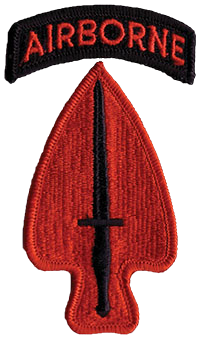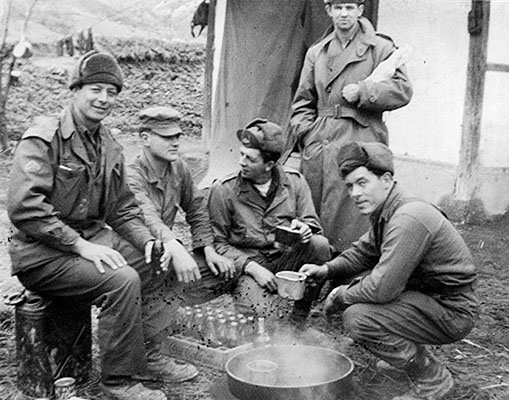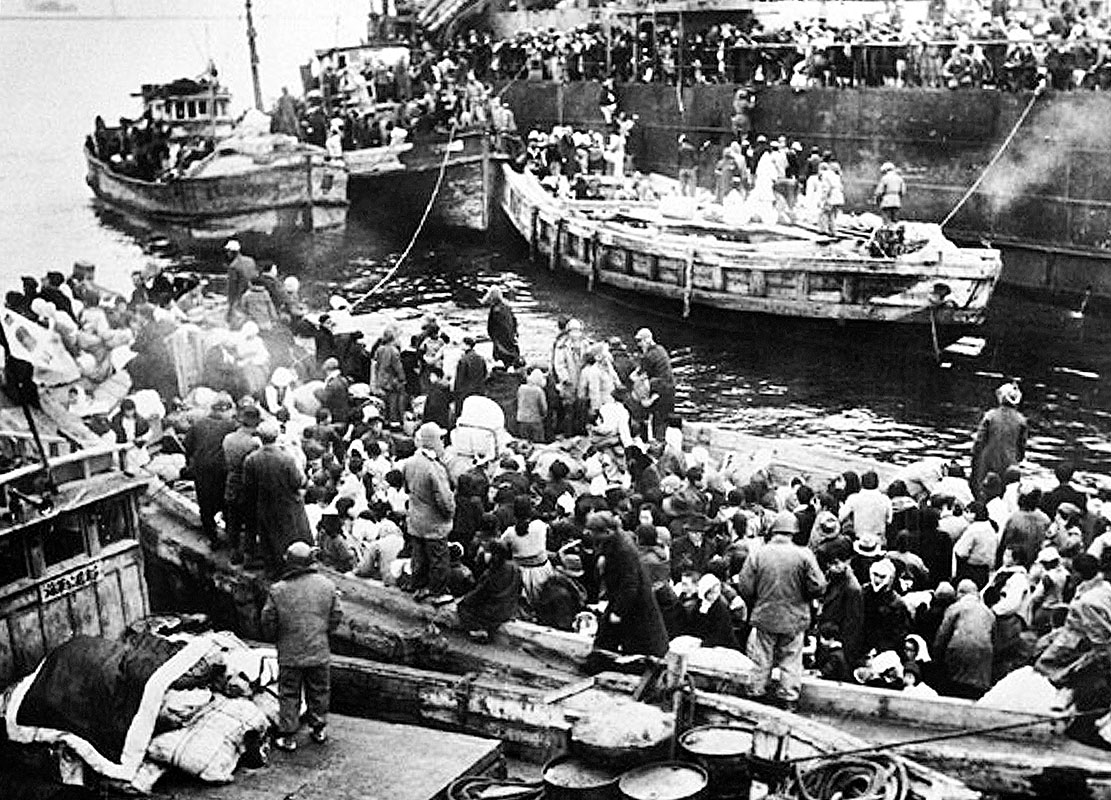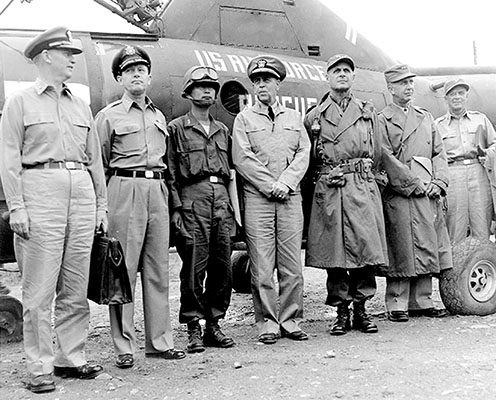
Headquarters, U.S. Army Special Operations Command (USASOC) maintains that five truths guide the development and employment of modern Special Operations Forces:
- Humans are more important than hardware.
- Quality is better than quantity.
- Special Operations Forces cannot be mass produced.
- Competent Special Operations Forces cannot be created after emergencies occur.
- Most Special Operations require non-SOF Assistance.1
The above conclusions are the product of more than sixty years of Army Special Operations (ARSOF) experience that began in WWII. The war to defeat Germany and Japan prompted the Allies to create specialized units to perform long-range infiltration and covert missions, conduct psychological operations, and establish military governments in occupied areas. The return to peace in 1945 led to rapid demobilization of almost all special units except those involved in post-war civil affairs. The first “hot war” of the Cold War rekindled interest in all facets of unconventional warfare. When the war in Korea began, the initial eleven months of the conflict forced the U.S. Army to mobilize, train and deploy new units to perform old tasks. The Korean War validated the need for a constant Special Operations capability within the U.S. Army and forced the consideration of what would become the ARSOF truths, for it was difficult, if not impossible, to organize and fill SOF units with experienced personnel once the conflict began.

Beginning in June 1950, hastily formed provisional units drawn almost entirely from Far East Command (FECOM) assets performed a variety of special missions while the Eighth U.S. Army (EUSA) stabilized the Pusan Perimeter and prepared for the Inch’on landings. In August 1950, the GHQ Raiders joined U.S. Navy Underwater Demolition Teams (UDTs) and Royal Marine Commandos in maritime raids against a tenuous North Korean People’s Army (NKPA) logistics network, destroying the railroad infrastructure and conducting reconnaissance missions before the Inch’on invasion.2 In September 1950, the U.S. Army activated the 1st Loudspeaker and Leaflet Company (1st L&L), ordering it from Fort Riley, Kansas, to begin conducting tactical psychological operations in Korea, though it would be months before the unit was operationally effective.3 After the 15 September 1950 landings at Inch’on, the Eighth Army Ranger Company [8213th Army Unit (AU)], began carrying out counter-guerrilla patrols and eliminate pockets of enemy resistance behind Allied lines.4 On the heels of these efforts, the U.S. Army began organizing and training additional Ranger companies to augment individual infantry divisions at the recently established Ranger Training Command at Fort Benning, Georgia.5
After the success at Inch’on and the liberation of Seoul, General Douglas A. MacArthur convinced President Harry S. Truman that the NKPA had to be destroyed. By then, Republic of Korea Army (ROKA) troops had already crossed the 38th Parallel. Their victories over the NKPA and the ensuing UN advance led to the reconsideration of South Korean President Syngman Rhee’s desire for a unified peninsula. By October 1950, the UN advance into North Korea required the employment of Civil Assistance (CA) teams in the North Korean capitol of P’yongyang, as well as the ports of Chinnamp’o and Hungnam.6

In mid-October 1950, MacArthur and Truman met at Wake Island to discuss the president’s concerns about an expanded war and possible Soviet or Chinese intervention. As UN forces neared China’s southern border on the Yalu River, Mao Zedong ordered more than thirty Chinese divisions (300,000 soldiers) to surreptitiously cross the border to stop further UN advances. Undetected by UN reconnaissance efforts, the Chinese Communist Forces (CCF) attacked as the EUSA and X Corps launched their final push northward to the Yalu. Beginning on 25 November 1950, the battle-hardened CCF smashed the U.S. and ROKA units and then hammered UN forces trying to plug gaps on both sides of the peninsula. This offensive drove UN troops southward, changing the course of the war and ending U.S. and South Korean efforts to “liberate” North Korea. The war would not be won by Christmas as General MacArthur had boasted. Lieutenant General (LTG) Walton H. Walker in the west, and Major General (MG) Edward M. Almond, commanding X Corps in the east, ordered the withdrawal of UN forces south of the 38th Parallel. After establishing occupation governments and starting the reconstruction process in North Korea, UN Civil Assistance teams assumed evacuation duties to rescue ROKA, U.S. personnel and civilians trapped at P’yongyang, Chinnamp’o, Wonsan and Hungnam. What General MacArthur soon labeled “an entirely new war” prompted President Truman to meet with British Prime Minister Clement Atlee. They rejected President Syngman Rhee’s goal of reunification, and agreed to seek an armistice predicated on the recognition of two Koreas.7

When EUSA commander General Walker died in a 23 December 1950 Jeep accident, LTG Matthew B. Ridgway took command of a dispirited force left in chaos by the CCF offensive. Ridgway soon rejuvenated the “fighting spirit” of EUSA by launching a series of offensives: Operation THUNDERBOLT in January 1951, ROUNDUP in February, KILLER in late February, RIPPER in March, and RUGGED in April, that collectively drove the Communists back to the 38th Parallel.8 Again, special units played a significant role, in the process further validating the ARSOF concept. The six Ranger companies trained at Fort Benning were in Korea and had begun infiltrating behind the lines to attack enemy command posts, artillery, tank parks, and key communications centers or facilities in the rear areas. By April 1951, the fully operational 1st L&L began delivering loudspeaker broadcasts and propaganda leaflets.

As the “ebb and flow” began on the Korean peninsula, General MacArthur became increasingly critical of civilian decision-making that tied his hands militarily. The outspoken general went so far as to advocate expanding the war by direct military action against China, Truman’s decision to accept a negotiated peace notwithstanding.9 As UN forces moved north towards the 38th Parallel, MacArthur boldly announced that there was “no substitute for victory” in the war against Communism, and that the conflict must be won at all costs. These statements were subsequently leaked to Congress. Despite his popularity, this open defiance prompted President Truman to relieve General MacArthur from command and name LTG Ridgway as his replacement.10
Riding out the political tempest stemming from General MacArthur’s removal, Washington stuck to a “limited war” policy in Korea that freed resources to contain Communism elsewhere in the world. Even before the Korean War began, President Truman had demonstrated the American commitment to Europe in May 1950 by approving a modest aid package for the French, who were already fighting the Viet Minh for control of Indochina. Support for the recently formed North Atlantic Treaty Organization (NATO) in Europe took on increased importance on 2 April 1951, when General Dwight D. Eisenhower took command of Supreme Headquarters, Allied Powers in Europe (SHAPE), a post he held until announcing his presidential candidacy in early 1952.11
